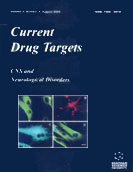Abstract
Endocannabinoids, defined in 1995 as endogenous agonists of cannabinoid receptors, their anabolic and catabolic pathways, and the enzymes involved in these pathways (the "endocannabinoid enzymes"), are the subject of this review. A general strategy seems to apply to the regulation of the levels of the two major endocannabinoids, anandamide and 2-arachidonoylglycerol (2-AG). Five endocannabinoid enzymes have been cloned to date: two are responsible for the biosynthesis and degradation of anandamide, the NAPE-selective phospholipase D and the fatty acid amide hydrolase, respectively; the other three catalyse the biosynthesis and degradation of 2-AG, the sn-1-selective diacylglycerol lipases α and β and the monoacylglycerol lipase, respectively. The major features of these five proteins, their relative weight in determining endocannabinoid levels, and the possible targeting of some of them for therapeutic purpose, as well as the possibility of the existence of alternative anabolic and catabolic pathways are discussed.
Keywords: ANANDAMIDE, CANNABINOID RECEPTOR ANTAGONISTS, fatty acid amide hydrolase (FAAH), DAG lipases, MAGL expression, post-synaptic neuron
 10
10

















